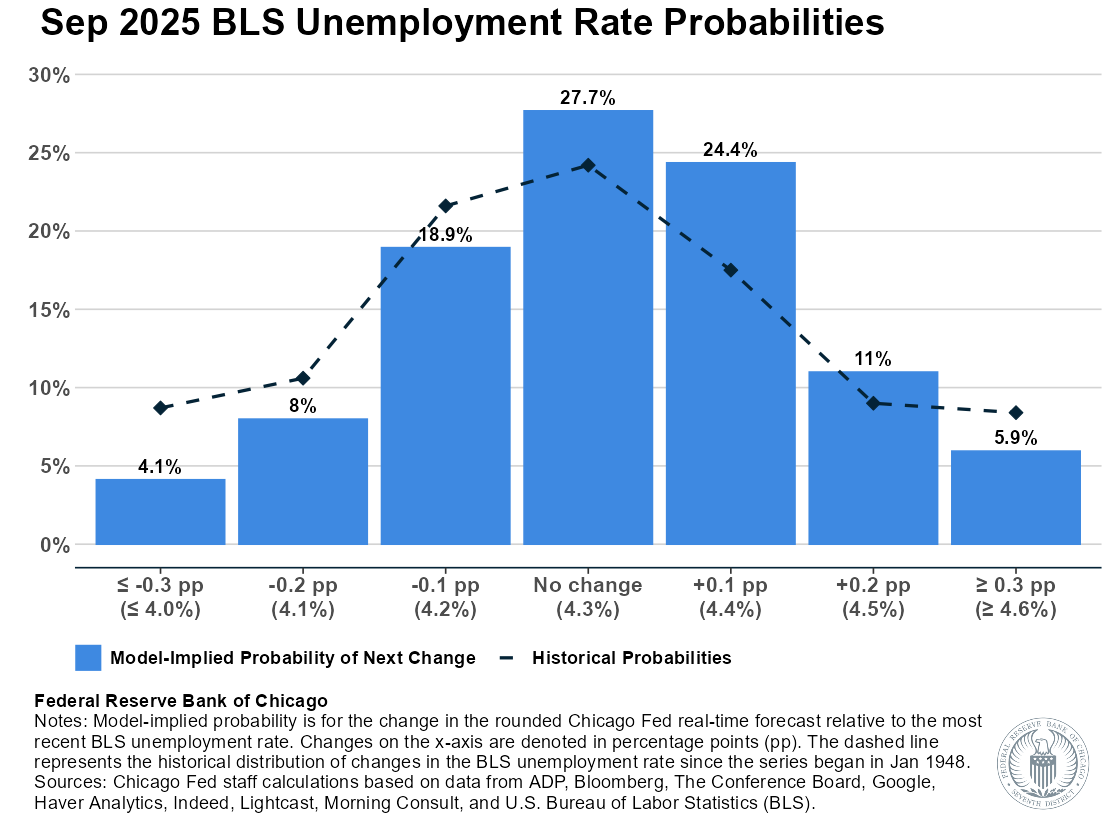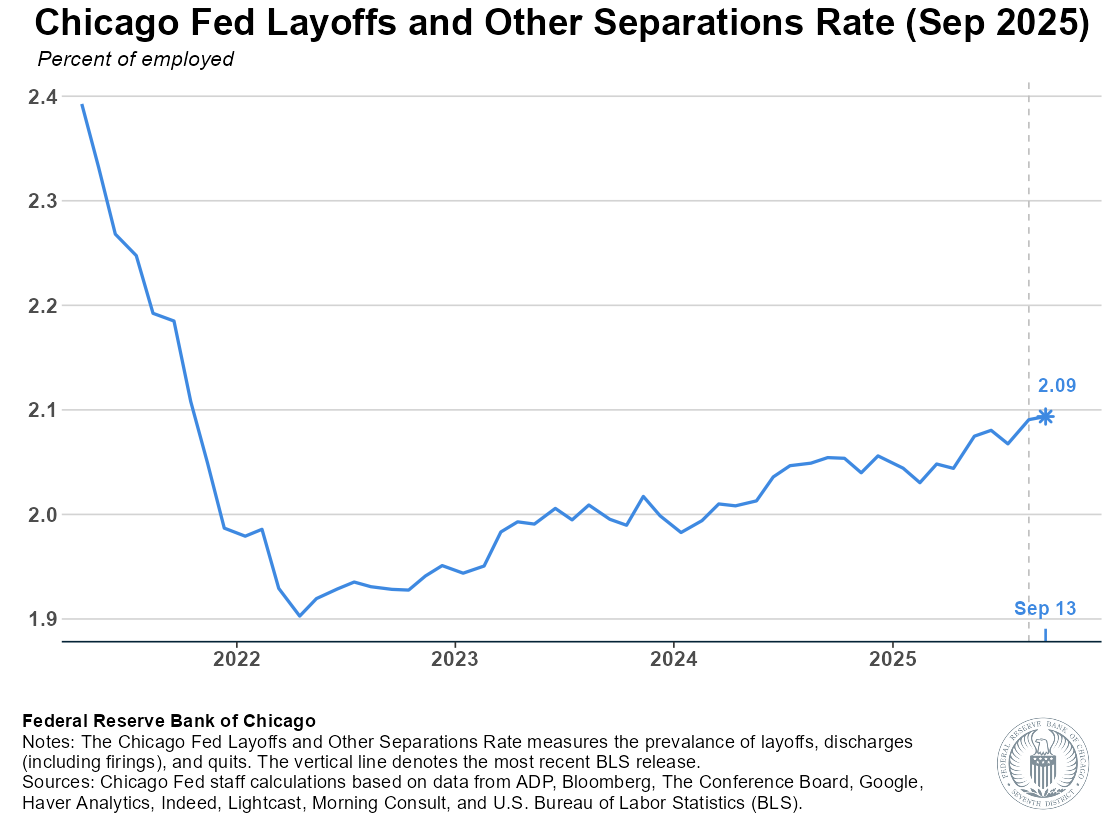December 4, 2025
The Chicago Fed Labor Market Indicators combine real-time private sector data with official labor statistics to provide a timely and comprehensive view of labor market conditions. Updated twice monthly ahead of the U.S. Bureau of Labor Statistics (BLS) Employment Situation report, the Chicago Fed Labor Market Indicators include a layoffs and other separations (discharges and quits) rate, a hiring rate for unemployed workers, and a forecast of the monthly BLS unemployment rate.
*The Chicago Fed Labor Market Indicators were published during the federal government shutdown. For more information on the shutdown’s impacts on the model, please refer to this November 6th FAQ document, also available in the download center below.
November 2025 (Final)
The November 2025 reference week (November 9th through November 15th) for the BLS survey used to estimate the unemployment rate partially overlapped with the federal government shutdown that began in early October and ended in mid-November. This special factor is likely to be only partially reflected in the October and November 2025 values of the Chicago Fed Labor Market Indicators.
Here are the latest estimates for November 2025 (reference week ending on November 15, 2025):
| Latest Release (Nov 2025) |
Previous Month (Oct 2025) |
Year-Ago Month (Nov 2024) |
|
| Layoffs and Other Separations Rate | 2.09% | 2.10% | 2.05% |
| Hiring Rate for Unemployed Workers | 44.85% | 44.66% | 47.80% |
| Real-Time Unemployment Rate Forecast | 4.44% | 4.46% |
4.23%**BLS actual |
To estimate the November 2025 unemployment rate probabilities, we made an adjustment to account for the cancellation of the November 7th release of BLS data for October. The probabilities shown below reflect the uncertainty in our model's estimate of the two-month change in the unemployment rate since its last reported value for September 2025. These estimates will be more uncertain than the one-month change probabilities that we typically report. For further details on why this is the case, see this November 6th FAQ. To help put these estimates into historical perspective, we have also updated the historical probabilities shown in the figure to reference two-month changes in the unemployment rate. A model-implied probability that exceeds its historical benchmark reflects an above-average likelihood for that particular range of unemployment rate changes and values.

Download Center
| Chicago Fed Labor Market Indicators Data | Data file | XLSX |
| Chicago Fed Labor Market Indicators Dashboard | Package containing interactive dashboard and data files | ZIP |
| Government Shutdown FAQs | November 6, 2025 |
Additional Details
The Chicago Fed Labor Market Indicators include estimates of two rates summarizing flows into and out of unemployment that provide context for changes in the unemployment rate:
- Chicago Fed Layoffs and Other Separations Rate (inflow rate)
- Chicago Fed Hiring Rate for Unemployed Workers (outflow rate)
These rates are scaled in such a way that the ratio of the inflow to the sum of the inflow and outflow rates is in similar units to the BLS unemployment rate (i.e., percent of labor force unemployed).
Layoffs and other job separations (such as quits and discharges) represent the most common ways in which workers experience voluntary and involuntary unemployment. The Chicago Fed Layoffs and Other Separations Rate is an estimate of the percentage of previously employed workers that experienced a separation event (layoff, quit, or discharge) leading to non-employment in the reference week of the month used by the BLS in its Employment Situation report. As the Layoffs and Other Separations Rate increases, it puts upward pressure on the unemployment rate.
The Chicago Fed Hiring Rate for Unemployed Workers is an estimate of the percentage of previously unemployed workers that transitioned into employment (or out of the labor force) during the BLS reference week. When unemployed workers successfully find a job (or leave the labor force), it reduces the upward pressure on the unemployment rate coming from layoffs and other job separations. As such, an increase in the Chicago Fed Hiring Rate for Unemployed Workers puts downward pressure on the unemployment rate.
Our measures of the inflow and outflow rates of unemployment will generally differ from other similar constructs for three reasons. First, we use data from the Current Population Survey to construct our measures versus the BLS establishment survey (Current Employment Statistics). Second, our measures are constructed from aggregates and scaled in order to preserve a direct relationship with the BLS unemployment rate. Finally, we combine official statistics from the BLS with private sector data to create estimates of both rates that jointly reflect these different types of data sources.
For additional information, see Forecast Details.









